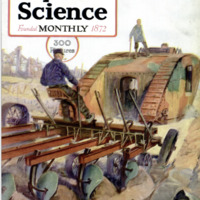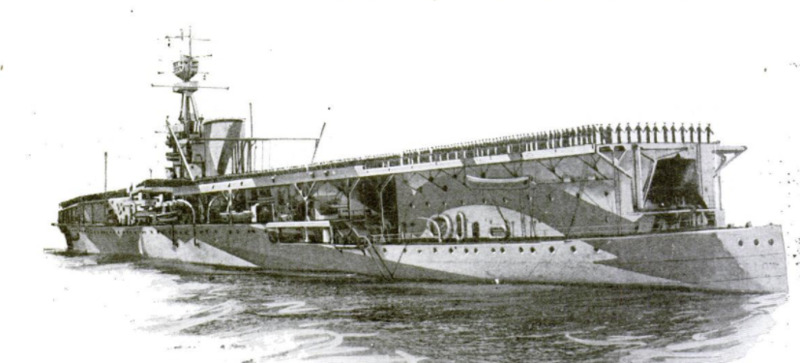Developments in the takeoff of planes on specifically designed ships
Item
-
Title (Dublin Core)
-
Developments in the takeoff of planes on specifically designed ships
-
Article Title and/or Image Caption (Dublin Core)
-
Title: Ships that Mother Seaplanes
-
Subtitle: Craft of the "Hush-Hush" fleet may play a part in the first trans-Atlantic fight
-
extracted text (Extract Text)
-
THE wind was rising to hall a
gale, and the pilot of the seaplane
felt that it was time to call it a
day. “Let's go home to mother,” he
said to his observer, and set the flying-
boat's nose in the direction of the Eng-
lish Channel.
An interval of swift flight, and the
observer shouted: “There's mother
now!” The seaplane’s nose dipped
down, and in a long, graceful curve she
swung down to the water.
Surrounded by Secrecy
“Mother's” picture appears at the
top of this page, and that of another
mother, to a seaplane brood at the
bottom. They were known in navy
slang as “Hush-Hush™
ships, because of the great
secrecy maintained about
them whilethe war wason.
Although eredit is
given to the Italian and
British navies for de-
veloping these mother
ships, it was our own
navy that first succeeded
in launching an airplane
from shipboard. Long
before the war, a slanting
runway was built above
the forward deck of a
warship, and a skilful
flyer, starting his plane
at the top, soared off.
Another daredevil later
succeeded in landing
safely on a similar nar-
row platform; but, even
with a broad airplane
deck provided, such
circus st ts are not en-
couraged. To land safely on so small
a space needs the extreme of nice
judgment plus luck.
‘When the war saw the seaplane
brood increase to large numbers, the
British and Italians improvised mother
ships from - old -liners -by - providing
accommodations for hangars and in-
stalling special cranes to pick up and
lower the planes. Later, craft designed
for this particular purpose were built,
of which the Furious, shown above, is
the last word. Her flush upper deck,
of unusual width, gives the airplane
pilot plenty of chance to taxi off at
the start, since the modern seaplane
has wheels as well as pontoons. Under
the deck are the hangars, reached
through the tunnellike opening at
the stern. The large traveling crane
forward picks up homing planes from
the water, and swings them into the
tunnel or lifts them out of their nests
to the deck, ready for flight.
Mother Ships in Peace
Perhaps the mother ships will play
an important part in the first trans-
Atlantic airplane flight. Believers
in the seaplane as the type of aircraft
most likely to succeed in that feat
point out that mother ships stationed
at intervals along the ocean track
would reduce the element of danger to
a mimmam. Seaplanes suffering from
engine trouble, or buf-
feted beyond endurance
by storms while in mid-
ocean, could find safe
haven and continue their
flight; an airplane once
committed to the ven-
ture would have to go
on or go down.
The difficulties of mak-
ing long non-stop flights
is illustrated by the
numerous failures attend-
ing the attempt to in-
augurate an airplane mail
service between Chicago
and the East. .
Not only were the
first aviators to make the
attempts forced down,
but their machines were
unable to continue the
flight and the service
had to be temporarily
abandoned.
-
Contributor (Dublin Core)
-
International Film (Image copyright)
-
Language (Dublin Core)
-
eng
-
Date Issued (Dublin Core)
-
1919-02
-
pages (Bibliographic Ontology)
-
80
-
Rights (Dublin Core)
-
Public domain (Google digitized)
-
Archived by (Dublin Core)
-
Davide Donà
-
Marco Bortolami (editor)
 Popular Science Monthly, v. 94, n. 2, 1919
Popular Science Monthly, v. 94, n. 2, 1919




